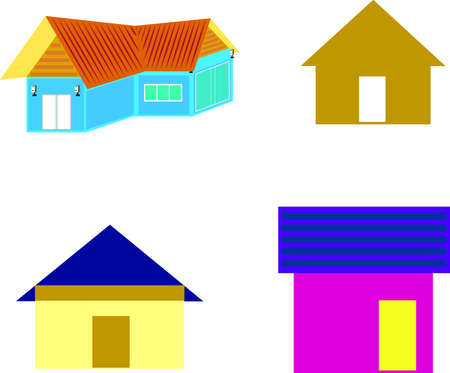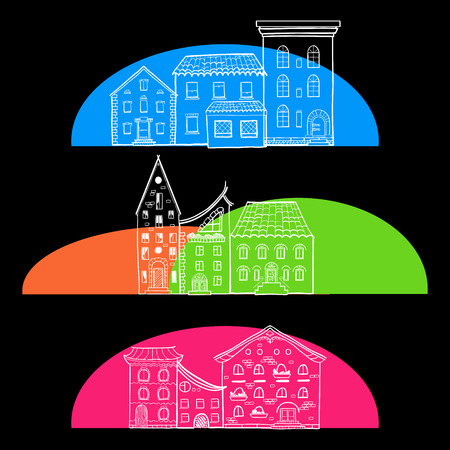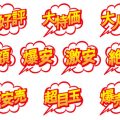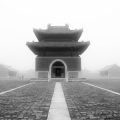1. Misinterpreting the Purpose of Feng Shui
Many Americans are drawn to Feng Shui because they see it as a trendy way to decorate their homes or as a set of stylish design hacks. While it’s true that Feng Shui can make a space look and feel better, its true purpose goes much deeper than just aesthetics. At its core, Feng Shui is an ancient Chinese practice focused on balancing the energy, or “chi,” within a space to improve overall well-being, harmony, and success.
Common Misconceptions About Feng Shui in America
| Misconception | What It Really Means |
|---|---|
| Feng Shui is only about moving furniture | Feng Shui considers furniture placement but also focuses on the flow of energy, light, color, and the five elements (wood, fire, earth, metal, water) to support health and prosperity |
| It’s just a home decor trend | Feng Shui is a holistic approach that connects your environment with your life experiences, aiming to boost happiness, relationships, and opportunities |
| You have to buy expensive items for good Feng Shui | True Feng Shui can be achieved with simple adjustments using what you already have by focusing on energy flow rather than material possessions |
Why This Mistake Matters
If you view Feng Shui as simply decorating with lucky charms or following popular trends without understanding its deeper meaning, you may miss out on the real benefits. When applied correctly, Feng Shui helps create spaces that feel more peaceful and supportive for everyone living there. By learning about the energy flow and how different elements interact in your home, you can make changes that truly enhance your daily life—not just the look of your rooms.
2. Focusing Only on Aesthetics, Not Energy Flow
One of the biggest mistakes Americans make when applying Feng Shui at home is prioritizing how a space looks rather than how it feels. It’s easy to get caught up in making your home look picture-perfect for social media, choosing trendy colors, stylish furniture, and Instagram-worthy décor. But Feng Shui is all about optimizing the flow of Qi (energy) throughout your living space—not just about looks.
Why Style Isn’t Everything in Feng Shui
While a beautiful room can feel inviting, if energy cannot move freely, even the most stylish space can feel uncomfortable or stagnant. In traditional Feng Shui, cluttered corners, blocked pathways, and overcrowded rooms can disrupt Qi and lead to negative effects on your mood and well-being.
Common Examples: Looks vs. Energy Flow
| Decor Choice | Aesthetic Focus | Feng Shui Impact |
|---|---|---|
| Large sofa blocking doorway | Makes living room look cozy on photos | Blocks Qi from entering & circulating |
| Wall art placed everywhere | Adds color & personality | Overwhelms the senses; energy feels crowded |
| Trendy shelving with lots of items | Looks organized and modern | Creates clutter; disrupts energy flow |
| Statement rugs under furniture legs | Adds style & color contrast | If rug edges are curled or crowded, can trip up Qi movement |
Tips to Balance Style and Energy Flow:
- Keep pathways clear: Make sure you can walk easily around furniture without bumping into anything.
- Edit décor: Less is often more. Choose fewer pieces that have meaning and leave space for energy to circulate.
- Use mirrors wisely: Mirrors can reflect light and energy but should not face doors directly as this can push Qi back out.
- Avoid blocking windows: Natural light supports positive energy; don’t cover windows with heavy drapes or large objects.
- Select calming colors: Instead of chasing trends, choose colors that make you feel relaxed and happy in your space.
The next time you’re tempted to buy that ultra-trendy coffee table or fill an empty wall with art, pause to consider how these choices might impact the movement of energy through your home. A balanced approach will help you create a space that’s both beautiful and good for your well-being.

3. Misplacing the Bagua Map
One of the most common mistakes Americans make when applying Feng Shui at home is misunderstanding how to properly use the Bagua map. The Bagua is a traditional energy map that divides your space into nine sections, each representing an important area of life, such as wealth, health, or relationships. In Western homes, confusion often arises because American house layouts can be quite different from traditional Chinese homes.
Why Misplacement Happens
Many people simply overlay the Bagua map on their floor plan without considering the main entrance or unique shape of their home. This can lead to certain areas—like wealth or career—being placed in the wrong rooms, making Feng Shui efforts less effective or even counterproductive.
Common Confusions with the Bagua Map
| Mistake | What Happens |
|---|---|
| Using the map based on compass directions only | The Bagua may not align with how you actually use your space |
| Ignoring irregular shapes (L-shaped, split-level) | Some life areas get missed or doubled up |
| Applying it room-by-room instead of for the whole house | The energy flow becomes inconsistent and weak |
How to Correctly Apply the Bagua Map in Your Home
- Align the bottom of the Bagua map with your homes main entrance wall, not just north on a compass.
- If your home isn’t a perfect square or rectangle, mentally extend lines to “fill in” missing areas for mapping purposes.
- Use the whole-home layout first before applying Bagua zones to individual rooms.
By understanding how to properly place the Bagua map, you can make sure your Feng Shui adjustments are both meaningful and effective—no matter what kind of American home you live in!
4. Overusing or Misusing Feng Shui Symbols
One of the most common mistakes Americans make when applying Feng Shui at home is over-decorating with popular symbols like lucky charms, fountains, or crystals. While these items are believed to attract positive energy, using too many—or placing them without understanding their true purpose—can actually disrupt the balance and harmony in your space.
Understanding the Role of Feng Shui Symbols
Feng Shui isn’t just about adding as many “lucky” objects as possible. Each symbol, whether it’s a money frog, laughing Buddha, or a bowl of crystals, has a specific meaning and ideal placement. When used thoughtfully, these items can enhance the energy flow in your home. But if they’re scattered everywhere without intention, they can create clutter and confusion.
Common Examples of Symbol Overuse or Misplacement
| Symbol | Common Mistake | Better Approach |
|---|---|---|
| Crystals | Placing clusters in every room without reason | Select locations based on your homes energy map (Bagua) |
| Lucky Bamboo | Adding multiple plants in every corner for luck | Use one healthy bamboo arrangement in an area needing growth energy |
| Water Fountains | Placing fountains in bedrooms or random spots | Put fountains near entryways or living spaces where flowing energy is needed—not bedrooms |
| Wind Chimes | Hanging chimes on every door and window | Hang chimes only where stagnant energy needs movement, such as near a blocked entryway |
| Lucky Charms (e.g., Money Frogs) | Piling up charms on shelves or desks without direction | Place one charm facing into the home to “invite” wealth—not facing out the door |
Tips for Using Feng Shui Symbols Effectively:
- Quality Over Quantity: Choose fewer pieces that have personal significance or suit your home’s needs.
- Right Placement Matters: Research where each item should go for best results.
- Avoid Clutter: Too many objects—even lucky ones—can block good energy instead of attracting it.
- Cultural Sensitivity: Use symbols respectfully and understand their cultural origins before adding them to your decor.
- Your Home Is Unique: What works in one house might not fit another. Trust your intuition and focus on creating a balanced environment that feels good to you.
If you’re unsure about which symbols to use or where to put them, consider consulting a local Feng Shui expert who understands both traditional principles and American lifestyles. This way, you’ll avoid turning your home into a crowded souvenir shop—and instead create a peaceful, welcoming space that truly supports your well-being.
5. Ignoring Clutter and Maintenance
One of the most common mistakes Americans make when applying Feng Shui at home is overlooking clutter and regular upkeep. No matter how well you place your furniture or which colors you choose, skipping routine cleaning, decluttering, and basic home repairs can seriously block the flow of positive energy—also known as “Chi.” In Feng Shui, a clean and well-maintained space is the foundation for harmony and good fortune.
Why Clutter Matters in Feng Shui
Clutter isn’t just about mess; it represents stagnant energy that can make you feel stuck in life. When things pile up—old magazines, clothes you never wear, unused gadgets—they take up valuable space physically and energetically. In American homes, it’s easy to accumulate stuff in closets, garages, or spare rooms, but these hidden piles can still disrupt the flow of Chi.
Common Areas Where Clutter Hides
| Area | Typical Clutter Items | Feng Shui Impact |
|---|---|---|
| Entryway | Shoes, mail, bags | Blocks new opportunities from entering your life |
| Bedroom | Clothes, books under bed | Affects rest and relationships |
| Garage/Basement | Old tools, boxes, holiday decor | Keeps you stuck in the past |
| Kitchen Counters | Bills, appliances, dishes | Disrupts health and prosperity flow |
The Importance of Home Maintenance
Beyond clutter, neglecting basic repairs—like leaky faucets, squeaky doors, or chipped paint—can also weaken your Feng Shui efforts. In American culture, busy schedules often push these tasks down the priority list. However, broken items symbolize obstacles in your life path and can drain your home’s energy.
Simple Maintenance Tips for Better Feng Shui
- Fix leaks promptly to encourage wealth and prevent financial “drain”
- Oil squeaky doors so positive energy flows smoothly between rooms
- Replace burnt-out light bulbs to keep spaces bright and inviting
- Purge expired food from the fridge to support health and vitality
- Tidy outdoor areas to welcome fresh energy into your home’s entrance
Start Small: Easy Decluttering Steps for Busy Americans
You don’t have to overhaul your whole house at once. Try setting a timer for 15 minutes each day to tackle one area—like a junk drawer or kitchen counter. Donate or recycle items you no longer use. Even small steps help clear out stagnant energy and let good vibes flow freely throughout your home.


